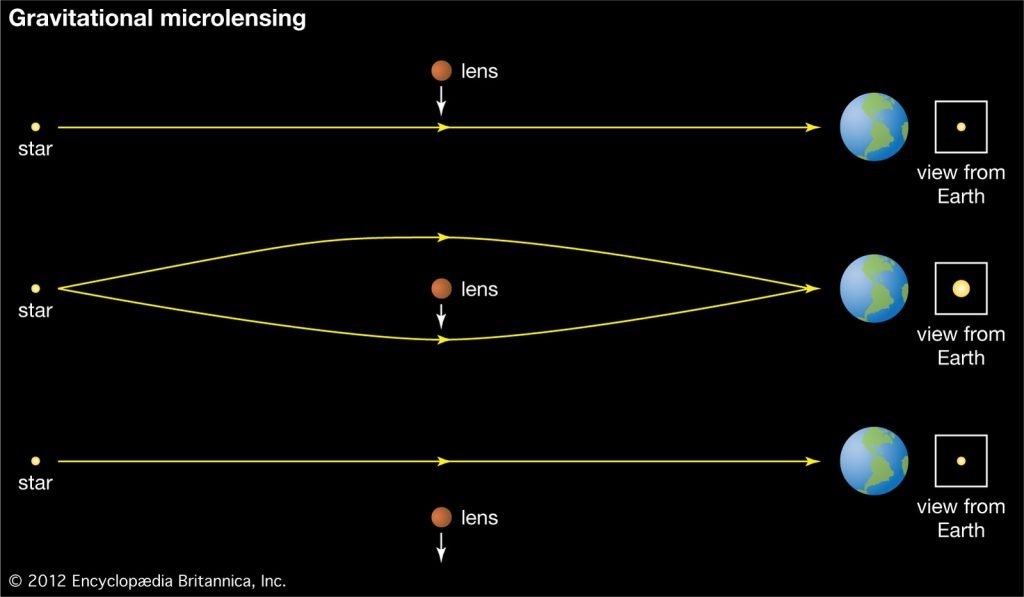A planet with No Orbit
The Smallest Rogue planet has been detected by the astronomers in our Milky Way galaxy which is a size between the size of Mars and Earth. For those who don’t know the meaning of a Rogue planet, it is a free-floating planet that doesn’t orbit around stars unlike the planets in our solar system.
Warsaw Telescope was used by the astronomers to find the planet named OGLE-2016-BLG-1928 which is located at Las Campanas Observatory in Chile.

OGLE Survey
The planet was found under the largest and longest sky surveys that began 28 years ago known as the OGLE survey, under which these astronomers were working. The OGLE survey astronomers aimed their telescopes on clear nights at the Milky Way’s mesial regions to observe millions of stars. This study was published in The Astrophysical Journal Letters on Thursday. According to the research, these untethered planets could outnumber the stars in our galaxy but the hardpoint is that they are not so easy to spot.
Microlensing: Invisible Became Visible
These planets are hard to spot because they don’t emit light like stars and neither emit enough heat that could be visible in infrared light. Rogue planets can only be spotted through microlensing events otherwise they are invisible worlds.
This phenomenon known as microlensing occurs when the existence of something enormous can wrap space-time like black holes but it can also occur around planets. The light from a star, with which a rogue planet is in alignment, will essentially bend around the planet which will result in a magnifying effect. According to researchers, the planet’s mass can be measured using these changes in light around the planet.

Przemek Mroz, a postdoctoral scholar at the California Institute of Technology who is the lead author said that if the massive object (a star or a planet) passes between an Earth-based observer and a distant source star, its gravity may deflect and focus light from the source and the observer will be able to measure a short brightening of the source star.
Wait is Crucial
Perfect alignment of source, lens, and the observer is required to increase chances of observing microlensing as chances to observe it is extremely slim. If only one of the source stars is observed, then to watch a source getting micro-lensed will take a million years.
OGLE survey provides the best chance to observe microlensing events as it monitors hundreds of millions of stars near the center of the Milky Way. The determination of the mass of the object is made easier for researchers with the duration of microlensing events, the determining factor as the object will be smaller if the event is smaller. For this rogue planet, the microlensing event lasted for 42 minutes (shortest event confirmed yet) which on other hand last for a few hours for some planet.
Radoslaw Poleski, an astronomer at the Astronomical Observatory of the University of Warsaw who is also the co-author said in a statement that it was quite clear when they first spotted this event, they understood that this was caused by an extremely tiny object.
How are rogue planets formed?
The formation of a planet is itself a violent and erratic process as the gas and dust in the disks around the juvenile stars bunch together and gradually grow in size to form planets. And if these processes sometimes have collisions between objects on grander scales and if these planets dis-form their orbit by coming close to the other planet’s orbit or star itself can result in kicking the planet out of the system which gives these planets the name, ROGUE.
What do scientists expect to learn?
Lonely planets can also be possibly formed on their own in isolated clouds of gas and dust. More such rogue planets are expected to be revealed as Nancy Grace Roman Space Telescope, NASA’s upcoming observatory is expected to launch in the mid-2020s.

Very few rogue planets have been found by the scientists yet but Roman Space Telescope’s capabilities will allow it to find and characterize these roaming nomad planets which would shed more light on the formation, evolution, and disruption of planetary systems and most important their origin stories. And According to recent studies, it is expected that there are more rogue planets in our galaxy than the stars.
